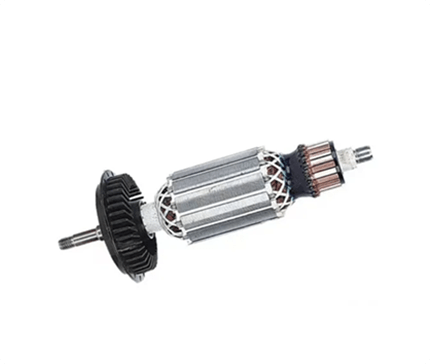- Home
- Products
- About Us
- Application
- News
- Contact Us
Web Menu
- Home
- Products
- About Us
- Application
- News
- Contact Us
Product Search
Exit Menu
Why Are Armature for Power Tools Crucial for Performance?

When it comes to power tools, the armature plays a key role in determining the tool's overall performance. As an essential component in the motor assembly, the armature is responsible for converting electrical energy into mechanical energy, driving the tool's movement.
1. Energy Conversion and Motor Function
The armature in power tools is responsible for the conversion of electrical energy into rotational motion. When electricity flows through the armature, it creates a magnetic field that interacts with the tool's stator, generating the mechanical force needed to drive the tool's action. This process is fundamental to the functioning of any electric-powered tool, from drills to saws and grinders.
Without a properly functioning armature, the motor cannot operate efficiently. A malfunctioning armature can result in the tool losing power, becoming sluggish, or even failing to operate altogether. Therefore, armatures for power tools are critical for ensuring that the motor performs its intended function, delivering the necessary power and torque to get the job done.
2. Durability and Longevity
The durability of an armature is closely tied to the overall lifespan of the power tool. A well-made armature, constructed from high-quality materials like copper windings and durable laminates, can withstand the stresses and heat generated during operation. In contrast, a poorly constructed or worn-out armature can degrade quickly, leading to premature motor failure.
Overheating, friction, and wear from continuous use can damage the armature over time. Regular maintenance and careful use of power tools can extend the life of the armature, but eventually, it may need to be replaced. Choosing a power tool with a high-quality armature can improve the tool's durability and reduce the frequency of replacements, ultimately enhancing the overall value of the tool.
3. Impact on Performance and Efficiency
The armature's condition directly affects the efficiency of power tools. When the armature is in optimal condition, the motor operates smoothly, and the tool delivers consistent performance. However, if the armature is damaged or worn out, the motor may struggle to generate the necessary power, leading to reduced efficiency and performance.
In power tools, efficiency is crucial. A tool with a weakened armature will draw more electricity while delivering less power, which can cause unnecessary energy consumption. This not only affects the tool's performance but also results in higher electricity costs and increased wear on the tool's other components.
4. Speed and Precision
Armatures also influence the speed and precision of power tools. A well-functioning armature enables the motor to run at the required speed, ensuring that the tool performs at its good for specific tasks. For instance, in applications like drilling or sanding, maintaining a consistent speed is important for achieving precise results.
If the armature is malfunctioning, the tool's speed may become inconsistent, making it difficult to maintain control or accuracy during work. This could result in subpar results, especially in detailed tasks that require high levels of precision.
5. Compatibility and Replacement
When purchasing a replacement armature for power tools, it's essential to choose one that is compatible with the tool's specific model. Incompatible armatures can cause issues such as improper fit, overheating, or insufficient power, which ultimately affects the tool's performance. Always ensure that the replacement armature matches the specifications of the original component.
Armatures for power tools are crucial for both the performance and longevity of the tool. They are responsible for converting electrical energy into mechanical energy, driving the tool's movement and ensuring that it operates smoothly. A high-quality, durable armature contributes to the efficiency, speed, and precision of the tool, while a worn-out or malfunctioning armature can cause performance issues and reduce the tool's lifespan.
-
Add: 1st Floor, No. 2, Huanan Road, Zhengcun, Economic Development Zone, Yongkang City, Zhejiang Province, China
-
Tel: +86-0579-87133113
-
E-mail: [email protected]

 English
English русский
русский Español
Español